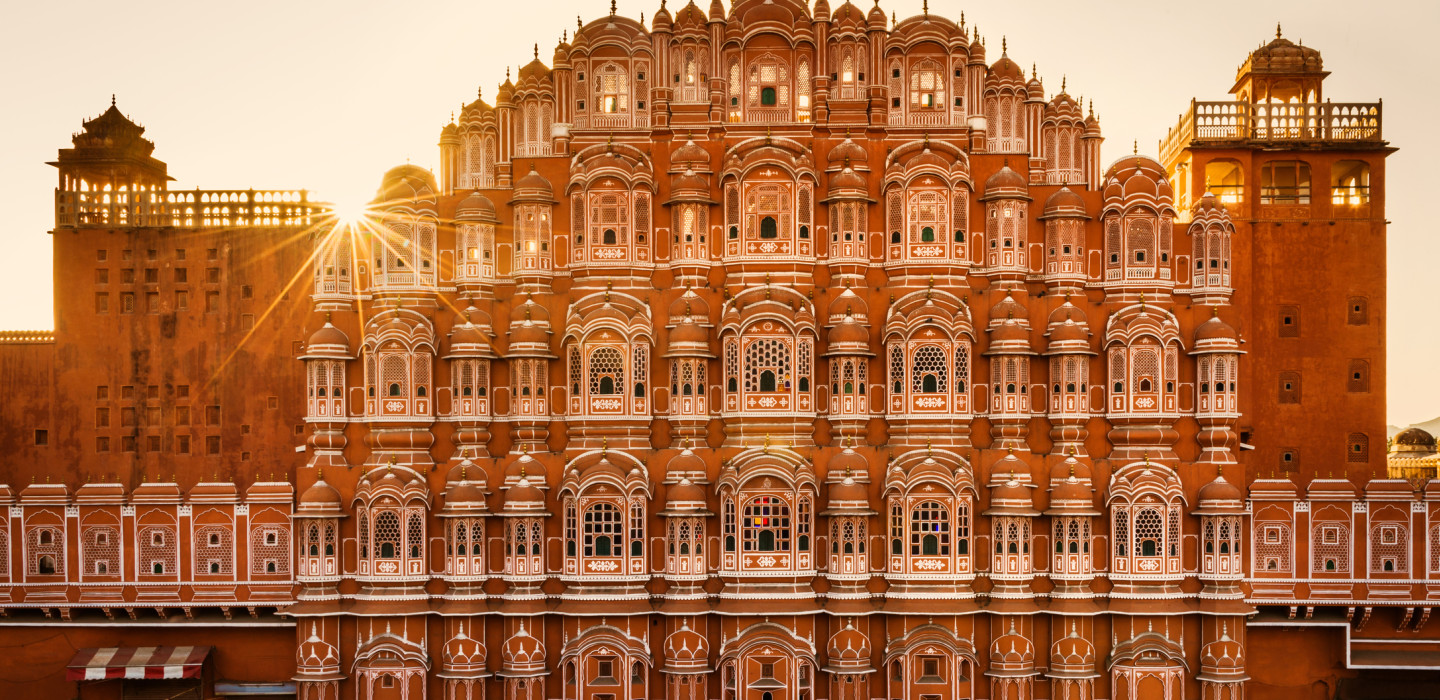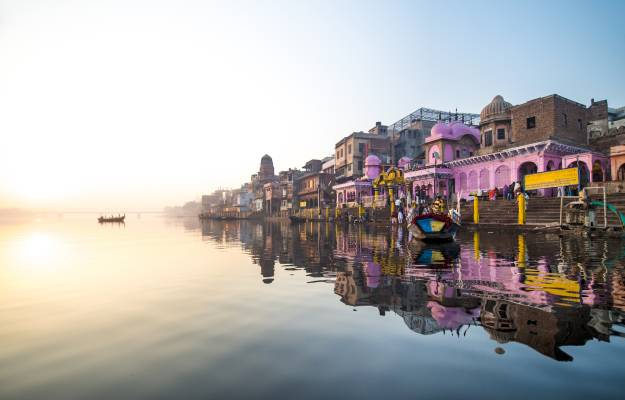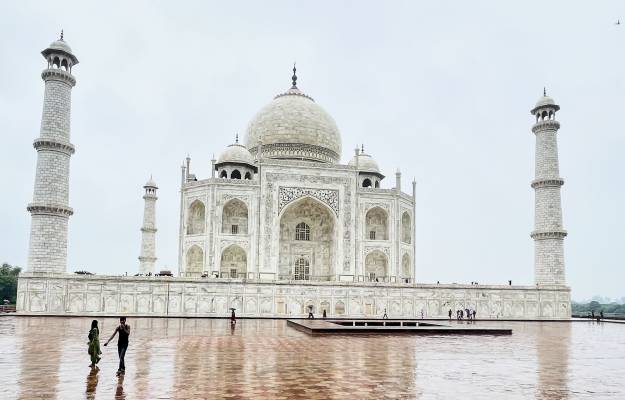
Spotlight on Jaipur
One of India’s first planned cities, Jaipur was built in the 18th century as a royal capital for the region’s maharajahs. Jaipur's nickname—Pink City—stems from its trademark rose-hued buildings, painted pink to welcome the Prince of Wales in 1876.
Today, the city’s landscape is filled with architectural monuments that reflect its colorful history: the splendid Amber Fort, the magnificent City Palace complex, the impressive Jantar Mantar observatory and the show-stopping Palace of the Winds—just to name a few.
Whether you explore the Pink City through an insider’s tour of Jaipur’s history or a shopping excursion through bustling local markets, here are a few highlights you won't want to miss.


City Palace
A stunning confluence of Rajput, Mughal and European architectural styles, City Palace sits in the heart of old Jaipur and is still the home of the last ruling royal family, who live in a private part of the complex. Wander through the ornately decorated palaces, gardens and gates for a glimpse into nearly three centuries of royal history. Peruse a collection of royal textiles and costumes, as well as a display of well-preserved weapons used by the Rajputs. Don’t miss the Pritam Niwas Chowk—a rectangular courtyard with four beautifully decorated archways representing the four seasons.
Jantar Mantar Observatory
A UNESCO World Heritage site built between 1728 and 1734, Jaipur’s Jantar Mantar features 14 different structures designed to follow celestial movements. The Samrat Yantra, the world’s largest sundial, stands at nearly 100 feet tall. Royal astronomers would often climb to its very top to announce eclipses as well as the imminent arrival of the monsoon. Other interesting pieces include the Mirror of the Heavens, a bowl-shaped instrument with marble walls and a metal disk that reflects every part of the sky, and the Jai Prakash, which used to track the sun and stars, as well as to calibrate other instruments.


Palace of the Winds
The Palace of the Winds, or Hawa Mahal, is a beautiful honeycombed structure crafted from pink and red sandstone. Constructed in 1799, the palace resembles the shape of Lord Krishna’s crown, giving it a distinctive look. The intricate façade of the building allowed the royal ladies of the court to discreetly watch processions on the street without being seen by the public. The palace’s 953 windows also allowed cool breezes to flow through in the summertime, thus earning it the name “palace of the winds.”
Amber Fort
Built in the 16th century, Amber or Amer Fort is sprawling complex of fortifications, royal palaces and majestic gates that sits high on a hill overlooking Jaipur. Once inside the inner walls of the fort, admire the impressive Ganesh Pol—or Ganesh gate—beautifully adorned with detailed frescoes. Marvel at the mirror palace, whose walls are covered in floral patterns of mirror and glass that sparkle in the sunlight. Explore the secret passages that connected the royal chambers and take in breathtaking views of the surrounding countryside from the ramparts and towers.



